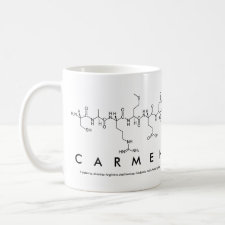
Authors: Hiratani H, Alvarez-Lorenzo C, Chuang J, Guney O, Grosberg AY, Tanaka T
Article Title: Effect of reversible cross-linker, N,N'-bis(acryloyl)cystamine, on calcium ion adsorption by imprinted gels.
Publication date: 2001
Journal: Langmuir
Volume: 17
Issue: (14)
Page numbers: 4431-4436.
DOI: 10.1021/la010056m
Alternative URL: http://mobydick.ucsf.edu/Jeff/Papers/la010056m.pdf
Abstract: Imprinted gels incorporating two different breakable cross linkers, a PbMAA(2) complex and a disulfide (S-S) bond, were prepared by radical polymerization. After the lead ions were removed by washing, these gels showed a high affinity for calcium ions. Breakage and subsequent reconnection of the S-S bonds in the absence of Ca2+ decreases the Ca2+ binding affinity of the gel. This indicates that random reconnection of the S-S bonds produces a frustration in the adsorption of Ca2+ by the carboxyl groups. However, if the S-S bonds were reconnected in the presence of Ca2+ and the Ca2+ was subsequently removed (the post-imprinting technique), the resulting gels showed a higher binding affinity for Ca2+. This indicates that the post-imprinting technique creates a more favorable conformation for Ca2+ binding in the polymer network. We interpret our data to mean that "memory" of target binding sites was encoded effectively into the polymer network by the initial imprinting technique and then enhanced by the post- imprinting technique
Template and target information: calcium ion, Ca(II)



Join the Society for Molecular Imprinting

New items RSS feed
Sign-up for e-mail updates:
Choose between receiving an occasional newsletter or more frequent e-mail alerts.
Click here to go to the sign-up page.
Is your name elemental or peptidic? Enter your name and find out by clicking either of the buttons below!
Other products you may like:
 MIPdatabase
MIPdatabase









